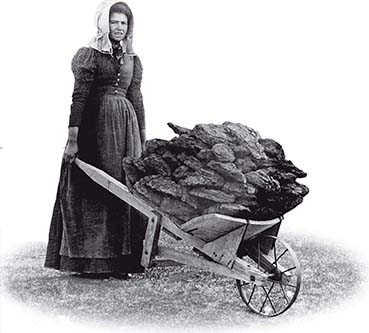SECTION 3: Transforming the West

◄ Pioneer woman gathers buffalo chips to use as fuel.

Locusts were one of the challenges to farming on the Plains. ►
WITNESS HISTORY  AUDIO
AUDIO
A Test of Courage
Pioneer life in the West in the late 1800s was significantly different from daily life in the East. The challenges were great and survival often difficult. However, according to Lulu Fuhr, a Kansas pioneer, the pioneering spirit met these challenges head-on:
“There were many tearful occasions for the tearful type. There were days and months without human fellowship, there were frightful blizzards, [drought] destroying seasons … and many pitiful deprivations, but there were also compensations for the brave, joyous, determined pioneer.”
—Lulu Fuhr
Objectives
- Analyze the impact of mining and railroads on the settlement of the West.
- Explain how ranching affected western development.
- Discuss the ways various peoples lived in the West and their impact on the environment.
Terms and People
- vigilante
- transcontinental railroad
- land grant
- open-range system
- Homestead Act
- Exoduster
NoteTaking
Reading Skill: Identify Main Ideas Use a chart to record details about changes in the West.

Western Settlement
Miners
Railroads
Ranchers
Farmers
Why It Matters The West was swept by enormous change after the Civil War. As railroads increased access, settlers, ranchers, and miners permanently transformed millions of acres of western land. Section Focus Question: What economic and social factors changed the West after the Civil War?
Miners Hope to Strike It Rich
Mining was the first great boom in the West. Gold and silver were the magnets that attracted a vast number of people. Prospectors from the East were just a part of a flood that included people from all around the world.
Mining Towns Spring Up
From the Sierra Nevada to the Black Hills, there was a similar pattern and tempo to the development of mining regions. First came the discovery of gold or silver. Then, as word spread, people began to pour into an area that was ill prepared for their arrival. The discovery of gold at Pikes Peak in Colorado and the Carson River valley in Nevada are classic examples. Mining camps sprang up quickly to house the thousands of people who flooded the region. They were followed by more substantial communities. Miners dreamed of finding riches quickly and easily. Others saw an opportunity to make their fortune by supplying the needs of miners for food, clothing, and supplies.




